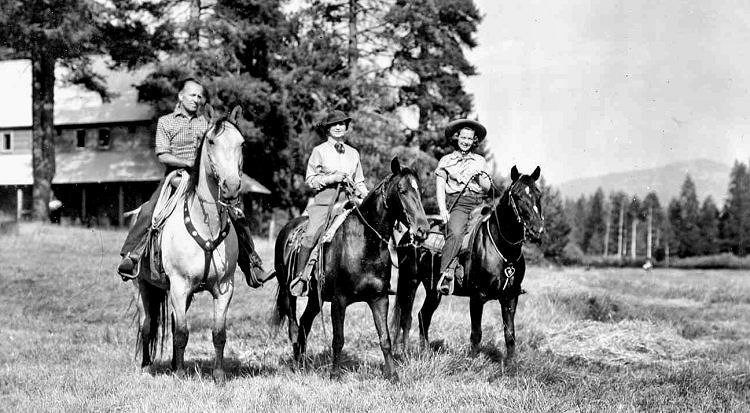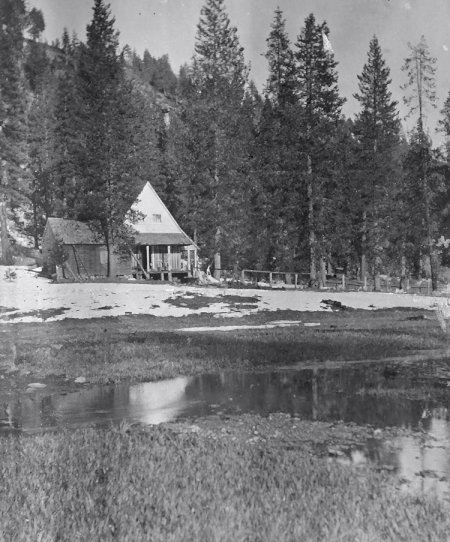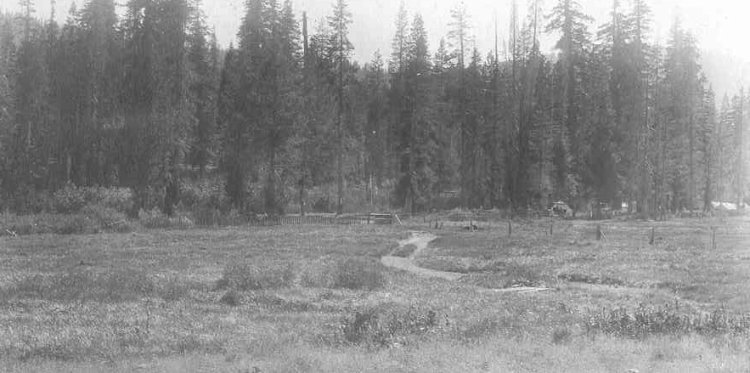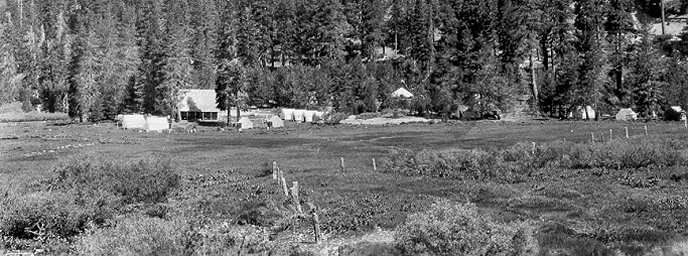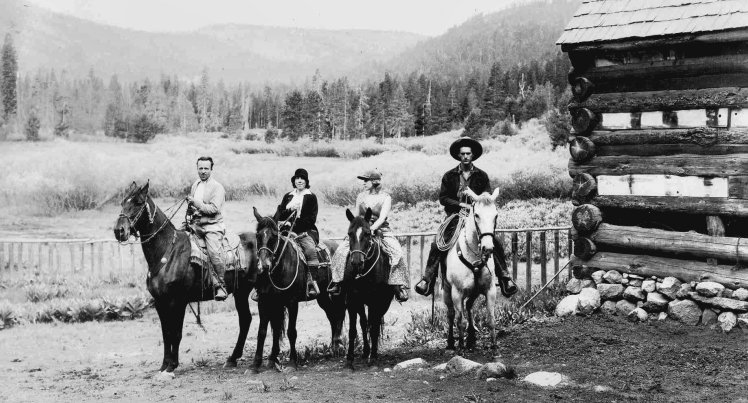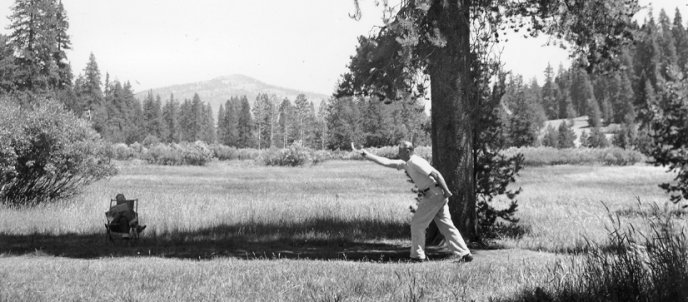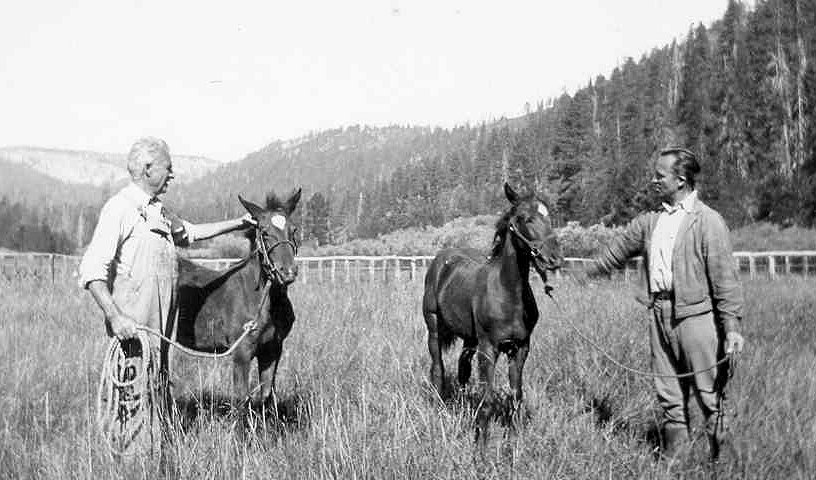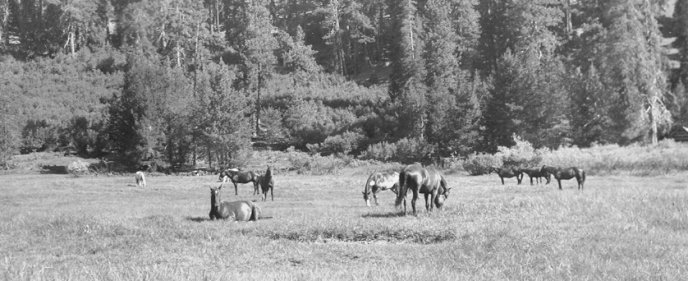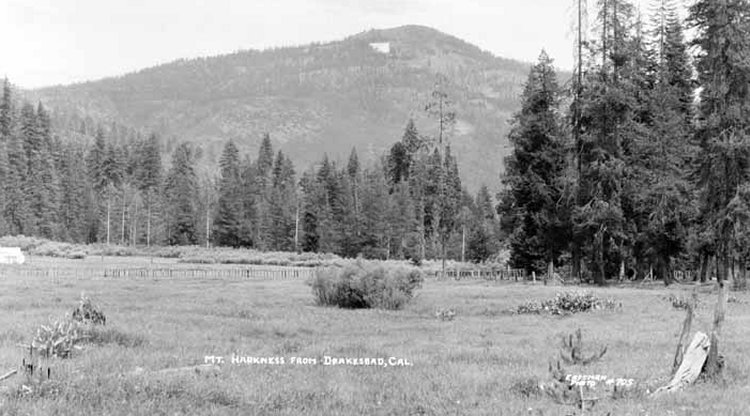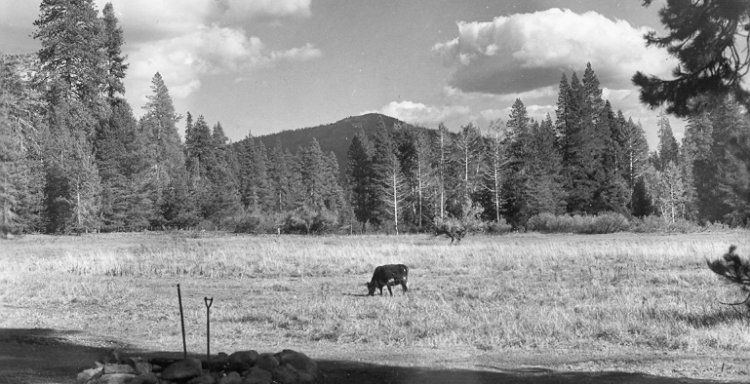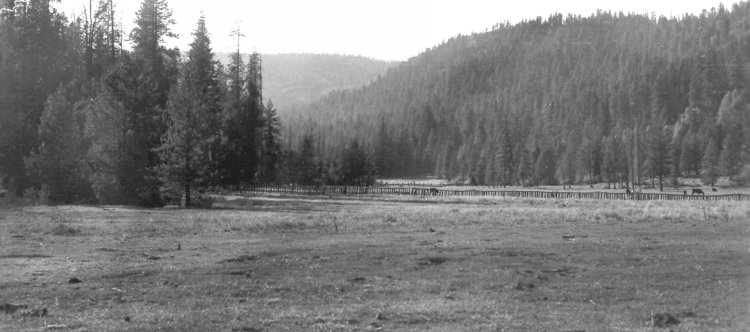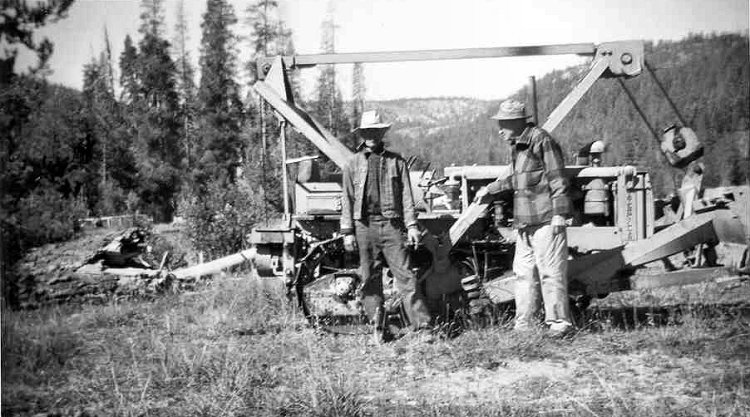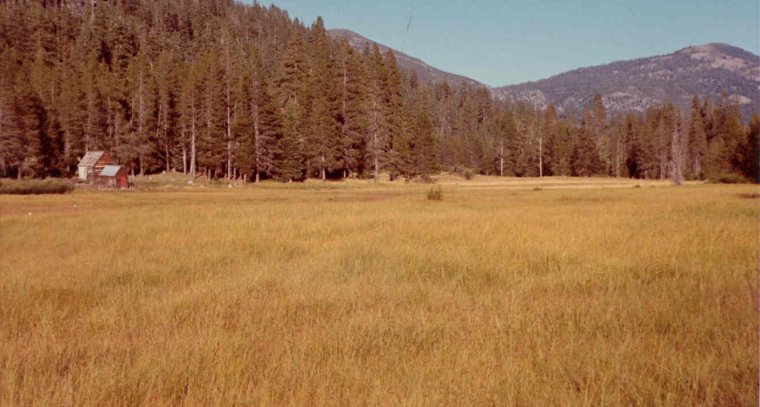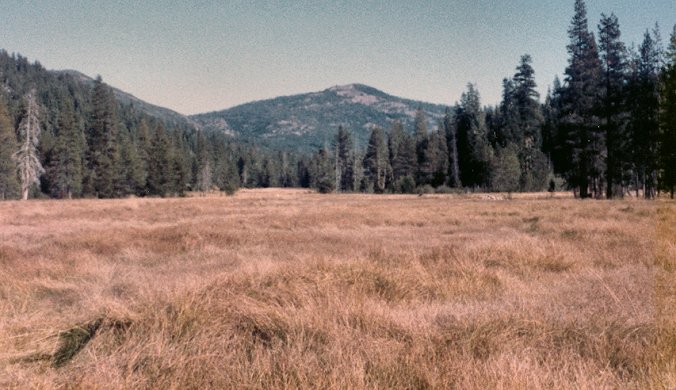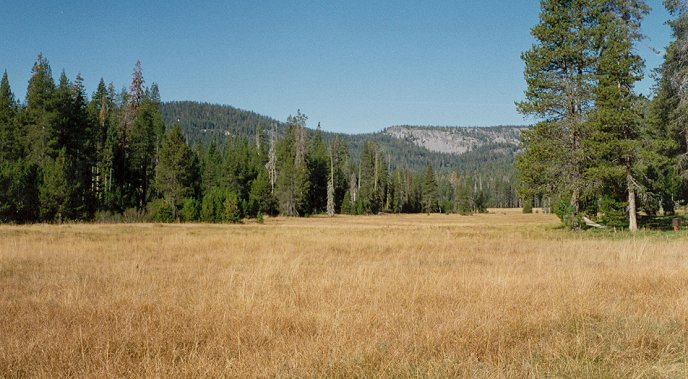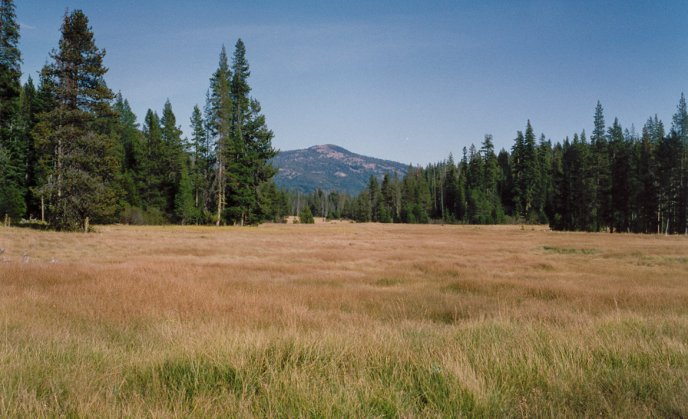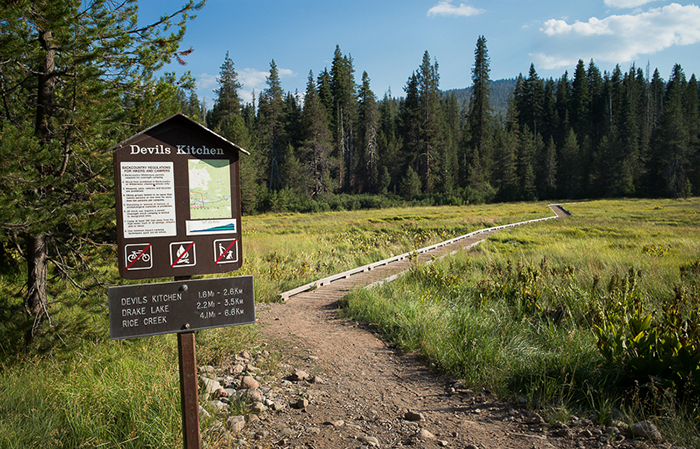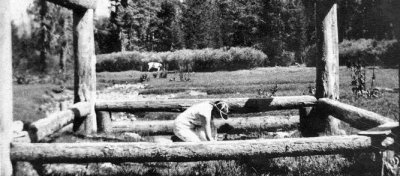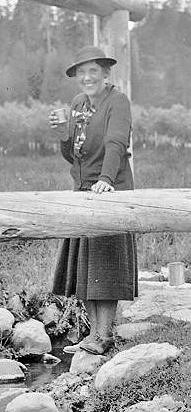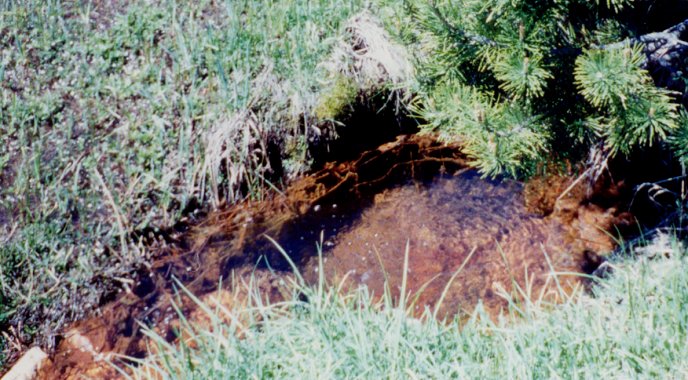Continuity and Change:
|
|
The Meadow and Soda Spring
In the years before he sold the property to the Siffords, Edward Drake "had cleared the willows and brush from around that part between the bath house and present lodge, or his house. The upper meadow was a mixture of willows and alder and some brush. He had started some ditching in the upper meadow but very little, it was a lifetime work" (Roy Sifford interviewed by Les Bodine 10/9/84). The June 30, 1933 edition of the "Chester Chatter" recalled that "Mr. Drake had a good large pasture all fenced in and sometimes there would be as many as a hundred head of horses as people would drive in from all around the Sacramento valley and other places to escape the heat of the summer and enjoy the wonders of the mountains".
"The meadow to the west of the house consisted of willows and bog holes, infested with mosquitos [sic]. (We would spend many years clearing it out by hand with a mattock, pick, shovel and axe.)" (Sifford 1994:7). "It was our own purchase from Mr. Drake and we all worked the most we could each day and as long as possible in the developing it from a big willow patch, pot holes, mud holes in the open meadow that it is now..... Dug drain ditches and grub willows, that was about all I knew for our first ten seasons there" (Roy Sifford interviewed by Les Bodine, July 87). "The valley itself was quite well filled with willows ....." (Roy Sifford interviewed by Dorothy Hill, July 29 1973). "We grubbed willows from the valley, hit and miss, all through the early years. And grubbing willows by hand is quite a detail. We naturally had no machinery, no Caterpillars, no tractors until later years and the way you grubbed willows was by main strength and awkwardness" (Roy Sifford interviewed by Dorothy Hill, July 29 1973).
Recalling the year 1905 Roy Sifford states, "We offered rooms, meals, saddle horses and guides. It was a busy year, over 600 people signed the register and that many more campers never signed at all. The pastures were filled with horses" (Sifford 1994: 34).
"In our early years we had an average of ten or twelve horses and by 1920 with the big rush of visitors wanting to see Lassen Peak we averaged about thirty saddle horses. This number dropped to twenty-five by 1931 and we kept that same number until 1951 when the Park Concessionaire took over, and then we slowly phased out that operation" (Sifford 1994:91).
The cedar stake fencing visible in the background was "about the only kind of fence that will hold up in the heavy snow" (Sifford Manuscript: 54a).
In 1942 with WWII in progress and meat rationing in force, the Siffords "searched around and found 100 cows and calves on the Nye ranch near Standish, in the Honey Lake Valley. We bought those and some others, and now we were in the cattle business" (Sifford 1994:103).
"I got a more modern Caterpillar, a 1944 D-4 with a blade and with that you could really grub more willows in a day than we could grub in a season with the mattock" (Roy Sifford interviewed by Dorothy Hill, July 29 1973).
"The Meadows at Drakesbad after Sifford and son grubbed and cleared them—much of this was a boggy willow patch in 1900AD—cleared-ditched-drained it" (Sifford Manuscript: 92a.). In 2012 the Park staff began a project to fill in the old Sifford ditches and restore the meadow to its natural state. The gravel path across the meadow was replaced with a boardwalk which now allows a natural flow of water across the meadow.
drakesbad/meadow.htm Last Updated: 09-Dec-2024 | ||||||||
